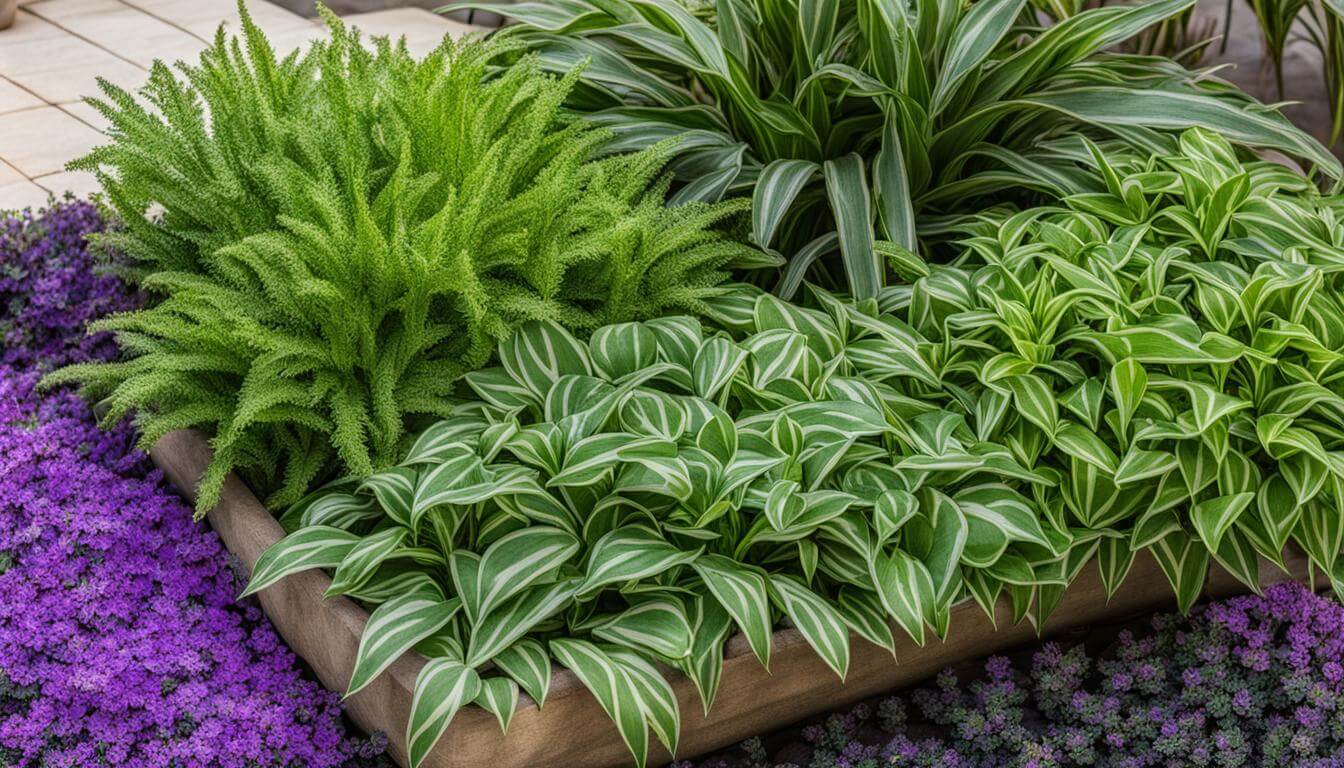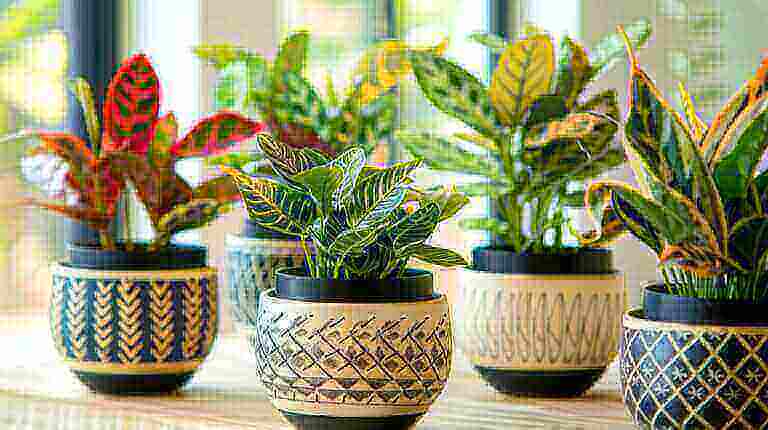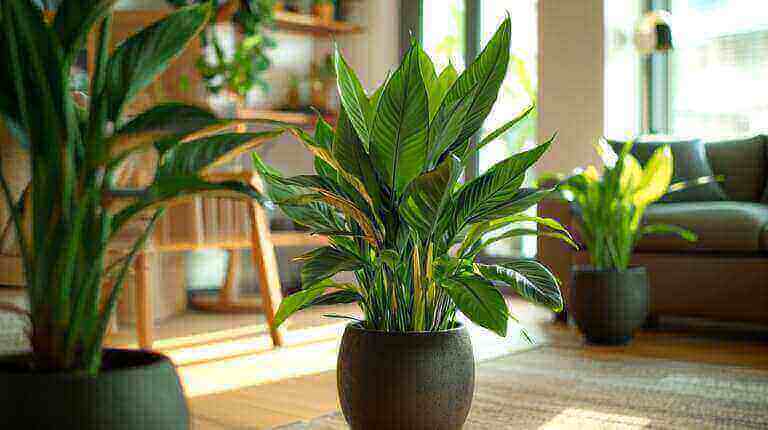Tradescantia Zebrina, also known as inch plant or wandering jew, is a versatile and attractive plant that can be used in various landscaping applications. It is commonly grown as a houseplant but can also be planted outdoors in mild climates. Tradescantia Zebrina makes a good temporary groundcover and can be mixed with other plants such as toad lilies to create interesting texture and color in the landscape.
With its succulent stems and variegated foliage, it adds a unique touch to any garden design. The plant is fast-growing and trailing, making it suitable for planting in hanging baskets or as an underplanting for taller tropical plants. It can also be used to fill in at the base of trees or larger container plants.
Tradescantia Zebrina is easy to propagate from cuttings and can be pruned to promote denser foliage. It thrives in light shade outdoors and bright light indoors, and it is important to provide regular water and good drainage for optimal growth. Overall, incorporating Tradescantia Zebrina in landscaping can enhance green spaces and create a visually appealing garden.
Key Takeaways:
- Tradescantia Zebrina is a versatile and attractive plant that can be used in various landscaping applications.
- It can be grown as a houseplant or planted outdoors in mild climates.
- Tradescantia Zebrina adds a unique touch to garden designs with its succulent stems and variegated foliage.
- The plant is fast-growing and trailing, making it suitable for hanging baskets or as an underplanting for taller tropical plants.
- It can be propagated easily from cuttings and requires regular water and good drainage for optimal growth.
Plant Care for Tradescantia Zebrina
Proper care is essential for maintaining the health and beauty of Tradescantia Zebrina. This plant requires regular watering, but it is important to allow the soil to dry out between waterings to prevent root rot. It is recommended to use well-draining potting soil and ensure good drainage in outdoor plantings. Fertilizing with a balanced, all-purpose fertilizer can promote lush foliage and healthy growth. Pruning and pinching the plants will help to promote bushier growth and prevent legginess. Tradescantia Zebrina can be easily propagated from cuttings, which root readily in water or moist soil. It is also important to monitor the plant for common pests such as aphids and spider mites, and take appropriate measures to control them. Overall, following these care instructions will ensure that Tradescantia Zebrina thrives and adds beauty to any landscape or indoor space.
Potting and Watering
When potting Tradescantia Zebrina, ensure that the pot has proper drainage holes to prevent waterlogging. Use well-draining soil, such as a mixture of potting soil, perlite, and peat moss. Water the plant thoroughly, allowing the excess water to drain out. Let the soil dry out between waterings to prevent root rot. Avoid overwatering, as it can lead to yellow leaves and root issues.
Fertilizing
Tradescantia Zebrina benefits from regular fertilization to support healthy growth. Use a balanced, all-purpose fertilizer, diluted to half strength, during the growing season. Apply the fertilizer every four to six weeks, following the package instructions. Fertilizing encourages lush foliage and vibrant color.
Pruning and Propagating
To maintain the bushy and compact shape of Tradescantia Zebrina, prune the plant regularly. Pinch off the tips of the stems to encourage branching and prevent legginess. You can also prune back any overgrown or damaged stems to maintain the plant’s overall shape. Additionally, Tradescantia Zebrina can be easily propagated from stem cuttings. Simply take a cutting from a healthy stem, remove the lower leaves, and place it in water or moist soil. The cutting will develop roots within a few weeks, and you can then pot it up in a new container.
Pest Control
Tradescantia Zebrina can be susceptible to common pests, such as aphids and spider mites. Regularly inspect the plant for signs of infestation, including sticky residue, webbing, or distorted leaves. If you notice any pests, you can try spraying the plant with a mixture of water and mild dish soap to control the infestation. Alternatively, you can use organic insecticidal soap or neem oil to treat the pests. It is important to follow the instructions on the product label and reapply as needed.
By providing proper care, including watering, fertilizing, pruning, and monitoring for pests, you can ensure that your Tradescantia Zebrina thrives and adds beauty to your garden or indoor space.
Creative Landscaping Ideas with Tradescantia Zebrina
If you’re looking for innovative ways to enhance your landscape, why not consider utilizing Tradescantia Zebrina, also known as inch plant, in your garden design? This versatile plant offers a range of landscaping ideas that can add beauty and visual interest to any outdoor space.
One creative way to incorporate Tradescantia Zebrina is by using its trailing habit and variegated foliage to create stunning hanging or trailing plants in containers. Whether you want to add a pop of color to your porch or create a cascading effect in your garden, Tradescantia Zebrina is an excellent choice.
In addition to containers, this plant can also be used as an underplanting for taller tropical plants. By planting Tradescantia Zebrina at the base of larger plants, you can create a lush and vibrant landscape with contrasting colors and textures.
Tradescantia Zebrina can also be planted as groundcover or used to create interesting patterns in garden beds. Its fast growth and vibrant colors make it an ideal choice for filling large spaces quickly and adding visual interest to your landscape.
FAQ
What are some landscaping uses for Tradescantia Zebrina?
Tradescantia Zebrina can be used as a houseplant, temporary groundcover, trailing plant in hanging baskets, underplanting for taller tropical plants, or to fill in at the base of trees or larger container plants.
How do I care for Tradescantia Zebrina?
Proper care for Tradescantia Zebrina includes regular watering, allowing the soil to dry out between waterings, using well-draining potting soil, fertilizing with a balanced, all-purpose fertilizer, pruning and pinching the plants to promote bushier growth, and monitoring for common pests such as aphids and spider mites.
What are some creative landscaping ideas with Tradescantia Zebrina?
Tradescantia Zebrina can be used as trailing or hanging plants in containers, combined with other plants in seasonal containers, used as an underplanting for taller tropical plants, or planted in shady or partially shaded areas to create interesting patterns or groundcovers in garden beds.







